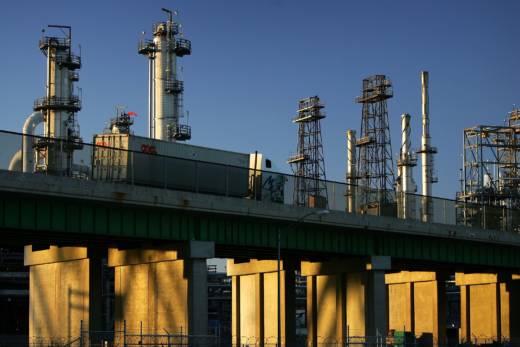The program caps the total amount of emissions in the state but companies can increase their emissions by purchasing pollution “allowances” from companies that pollute less.
So while the program succeeded in lowering overall emissions statewide, the study found that specific industries actually produced more emissions since the program was launched.
Cement plants saw the highest increase in emissions, or 75 percent, followed by electricity generators, and the oil and gas industry.
The increased emissions fell on neighborhoods with higher proportions of people of color and low-income residents, according the recent study.
Yet, the carbon trade program was partly intended to mitigate the disproportionate impact of air pollution in these communities. California law requires 25 percent of the program’s revenue to be invested in environmental measures that benefit vulnerable neighborhoods.
But Cushing and other researchers found that most of the program’s revenue stream is actually flowing out of the state, due to the way the program is designed.
Under the program, companies can offset their emissions by purchasing credits through forestry or agriculture projects, including those in other states. Rather than investing in local green projects, the study found that 75 percent of those credits — which are part of a regulatory scheme paid for by California taxpayers — went towards projects outside of California.
“Good climate policy is good for environmental justice,” said Cushing. “What we’ve seen from our study is that so far, California’s cap-and-trade program hasn’t really delivered on that potential.”
Still, Cushing says that California should be praised for its ambitious climate goals. She points to the state’s urban greening program that funds forests and greenways in vulnerable communities.
Additional measures may be needed, according to Cushing, to ensure that California’s cap-and-trade program lives up to its potential.
“Placing geographic restrictions on trading and limiting the amount of pollution ‘offset’ credits that companies can use to comply with the program could help incentivize local emissions reductions.”
